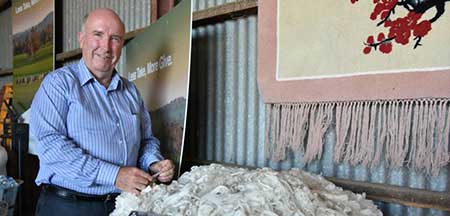Price certainty should be more important to woolgrowers than the fear of lost opportunity, according to Southern Aurora Markets partner Michael Avery. Last week, in a Sheep Connect SA webinar, he outlined Riemann wool forward contracts and options, risk management tools, launched in 2016. (See the recorded Forward Pricing Wool webinar - https://bit.ly/2HHSnME).
He said it was impossible for growers to predict the future and encouraged them to consider these products, especially while prices remain at or near historical
levels. Nearly all microns except 30 microns were trading the top 15 per cent of where they had been for past two years and Merinos were trading in
the top 5pc.
“There is considerable downside from here to get even the average price of the last two years- for the 18 microns it is 250 cents (a kilogram) under here and when we get to a basis chart it is just over 400 cents from the average on 21 microns which is really very significant,” he said.
Mr Avery said the ‘over the counter’ products enabled growers to gradually take a position in the market throughout the season, trading the micron that mirrored their production. On the specified auction date the contracts are cash settled against the relevant Australian Wool Exchange micron price guide, with the wool still physically available for sale.
Mr Avery said wool was one of the most volatile agricultural commodities and it was risky for growers to leave 100 per cent of their wool income to the outcome of one selling day. In the past eight years the 21 micron price guide has averaged 1270c/kg but has traded between 900 and 1938c/kg.
“It is not about picking the top of the market but looking at the cost of production, appetite for risk and cost of financing,” he said.
“Some banks are looking at pricing financing based on strategies of risk minimisation.”
His clients were typically hedged about 30 per cent of their clips through Riemann contracts but this percentage could go higher depending on where the market sat in relation to cost of production.
“Usually at shearing we look at next season price targets and might do as low as 5-10pc then another 10pc three to six months down the track,” he said.
Mr Avery said ongoing education was needed to increase trading volumes with just 2pc of Australia’s clip currently hedged through Riemann.
Extracted from article written by Catherine Miller, Stock Journal – April 2018






